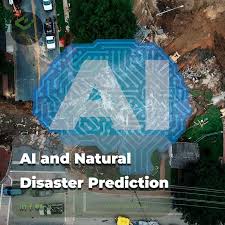AI in Disaster Relief: A Revolution in Preparedness and Response
Predicting the Unpredictable: Leveraging AI for Disaster Prediction
In today's world, natural disasters are becoming increasingly common and devastating. From hurricanes to earthquakes, these events can cause widespread damage and loss of life. However, with the rise of artificial intelligence (AI), there is a growing hope that we can better predict, prepare for, and respond to these disasters.
AI in Disaster Relief: A Revolution in Preparedness and Response
AI in Disaster Relief: Leveraging AI to predict natural disasters and optimize relief efforts.
Table of Contents
- AI in Disaster Relief: A Revolution in Preparedness and Response
- Predicting the Unpredictable: Leveraging AI for Disaster Prediction
- Unlocking the Secrets of Nature: AI-Powered Forecasting
- From Prediction to Prevention: AI's Role in Disaster Mitigation
- Optimizing Relief Efforts: AI's Power in Action
- Rapid Response and Resource Allocation: AI's Efficiency Boost
- Saving Lives and Property: AI-Driven Search and Rescue
- The Human Touch: AI's Role in Supporting Relief Workers
- Predicting the Unpredictable: Leveraging AI for Disaster Prediction
AI in Disaster Relief: A Revolution in Preparedness and Response
In today's world, natural disasters are becoming increasingly common and devastating. From hurricanes to earthquakes, these events can cause widespread damage and loss of life. However, with the rise of artificial intelligence (AI), there is a growing hope that we can better predict, prepare for, and respond to these disasters.
Predicting the Unpredictable: Leveraging AI for Disaster Prediction
Unlocking the Secrets of Nature: AI-Powered Forecasting
AI can analyze vast amounts of data from various sources, including weather patterns, seismic activity, and satellite imagery. This allows for more accurate and timely predictions of natural disasters, giving communities valuable time to prepare. AI-powered forecasting systems can identify potential risks, track the movement of storms, and predict the intensity of earthquakes, helping to save lives and minimize damage.
From Prediction to Prevention: AI's Role in Disaster Mitigation
Once a potential disaster is predicted, AI can help to mitigate its impact. By analyzing data on infrastructure vulnerability, population density, and evacuation routes, AI can help to develop effective disaster preparedness plans. This includes identifying critical infrastructure that needs protection, optimizing evacuation routes, and ensuring the timely delivery of essential resources.
Optimizing Relief Efforts: AI's Power in Action
Rapid Response and Resource Allocation: AI's Efficiency Boost
In the aftermath of a disaster, time is of the essence. AI can help to streamline relief efforts by quickly assessing the extent of damage, identifying areas of greatest need, and allocating resources efficiently. AI-powered systems can analyze data from social media, news reports, and satellite imagery to create real-time maps of affected areas, helping relief agencies to target their efforts effectively.
Saving Lives and Property: AI-Driven Search and Rescue
AI can play a crucial role in search and rescue operations. Drones equipped with AI-powered image recognition can quickly scan large areas for survivors, while AI algorithms can analyze data from sensors and cameras to pinpoint the location of people trapped in rubble. This technology can significantly reduce the time it takes to find and rescue victims, improving their chances of survival.
The Human Touch: AI's Role in Supporting Relief Workers
AI is not intended to replace human relief workers, but rather to augment their capabilities. AI systems can provide valuable support to relief workers by managing logistics, translating languages, and providing real-time information on the situation on the ground. This allows relief workers to focus on their core tasks of providing aid and support to those in need.
Summary
- AI can be used to predict natural disasters more accurately, giving communities time to prepare.
- AI can help to mitigate the impact of disasters by identifying vulnerable infrastructure and optimizing evacuation routes.
- AI can improve the efficiency of relief efforts by quickly assessing damage, allocating resources, and supporting search and rescue operations.
